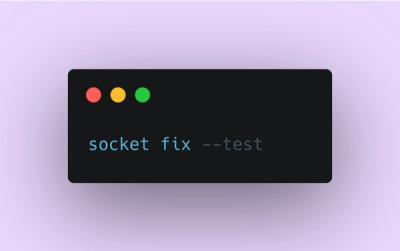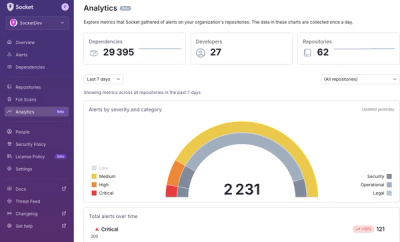
Product
Introducing Socket Fix for Safe, Automated Dependency Upgrades
Automatically fix and test dependency updates with socket fix—a new CLI tool that turns CVE alerts into safe, automated upgrades.
Ruby bindings for Tensorflow.
First you'll need to install Tensorflow 2. You can either do a full installation or just install Tensorflow for C. In both cases, you'll need to make sure the tensorflow library is on the system PATH so the Ruby bindings can load it.
Next install the gem:
gem install 'tensorflow-ruby'
The Ruby bindings are on built on top of TensorFlow's [C API] (https://github.com/tensorflow/docs/blob/master/site/en/r1/guide/extend/bindings.md)
which provides access to some, but not all, of TensorFlow's functionality. The Ruby bindings
are designed to mimic the Python API. Just like the
Python bindings, Ruby defaults to eager execution mode.
| Feature | Status |
|---|---|
| Run a predefined Graph | Implemented |
| Graph construction with generated op functions | Implemented |
| Gradients | Implemented |
| Functions | Implemented |
| Trainers | Gradient Descent Implemented |
| Data API | 80% Implemented |
| Tensorboard Support | Implemented |
| Control Flow | Not Implemented |
| Gradient Tape | Not Implemented |
| Keras | Not Implemented |
To learn how to use the library:
Constants are
a = Tf.constant([1, 2, 3])
b = Tf.constant([4, 5, 6])
a + b
v = Tf::Variable.new(0.0)
w = v + 1
Tf::Math.abs([-1, -2])
Tf::Math.sqrt([1.0, 4.0, 9.0])
# load
train_dataset = Tf::Data::Dataset.from_tensor_slices([train_examples, train_labels])
test_dataset = Tf::Data::Dataset.from_tensor_slices([test_examples, test_labels])
# shuffle and batch
train_dataset = train_dataset.shuffle(100).batch(32)
test_dataset = test_dataset.batch(32)
# iterate
train_dataset.each do |examples, labels|
# ...
end
Everyone is encouraged to help improve this project. Here are a few ways you can help:
To get started with development and testing:
git clone https://github.com/cfis/tensorflow-ruby.git
cd tensorflow-ruby
bundle install
rake test
FAQs
Unknown package
We found that tensorflow-ruby demonstrated a not healthy version release cadence and project activity because the last version was released a year ago. It has 1 open source maintainer collaborating on the project.
Did you know?

Socket for GitHub automatically highlights issues in each pull request and monitors the health of all your open source dependencies. Discover the contents of your packages and block harmful activity before you install or update your dependencies.

Product
Automatically fix and test dependency updates with socket fix—a new CLI tool that turns CVE alerts into safe, automated upgrades.

Security News
CISA denies CVE funding issues amid backlash over a new CVE foundation formed by board members, raising concerns about transparency and program governance.

Product
We’re excited to announce a powerful new capability in Socket: historical data and enhanced analytics.